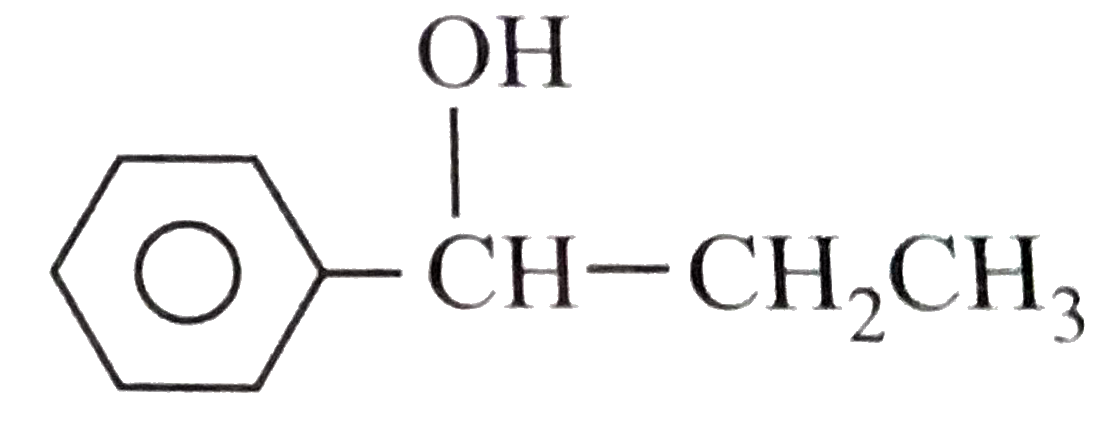H3C−COOHP2O5−−−−−→ΔAPCl5−−→BC6H6−−−−−→AlCl3C, C is-




The correct Answer is:B
To solve the question step by step, we will analyze each reaction mentioned in the problem.
Step 1: Reaction of Acetic Acid with P2O5
- Starting Material: Acetic Acid (H₃C-COOH)
- Reagent: P₂O₅ (Phosphorus Pentoxide)
- Process: P₂O₅ is a dehydrating agent, which means it removes water from the acetic acid.
- Product A: When acetic acid is treated with P₂O₅ and heated, it loses a water molecule and forms Acetic Anhydride (CH₃C(O)OC(O)CH₃).
Step 2: Reaction of Product A with PCl5
- Starting Material: Acetic Anhydride (Product A)
- Reagent: PCl₅ (Phosphorus Pentachloride)
- Process: PCl₅ reacts with acetic anhydride to convert it into acetyl chloride.
- Product B: The reaction produces 2 moles of Acetyl Chloride (CH₃C(O)Cl).
Step 3: Reaction of Product B with Benzene and AlCl3
- Starting Material: Acetyl Chloride (Product B)
- Reagents: Benzene (C₆H₆) and AlCl₃ (Aluminum Chloride, a Lewis acid)
- Process: The acetyl chloride undergoes Friedel-Crafts acylation with benzene in the presence of AlCl₃, leading to the formation of acetophenone.
- Product C: The final product is Acetophenone (CH₃C(O)C₆H₅).
Final Answer
Thus, the final product C is Acetophenone.
---
- Starting Material: Acetic Acid (H₃C-COOH)
- Reagent: P₂O₅ (Phosphorus Pentoxide)
- Process: P₂O₅ is a dehydrating agent, which means it removes water from the acetic acid.
- Product A: When acetic acid is treated with P₂O₅ and heated, it loses a water molecule and forms Acetic Anhydride (CH₃C(O)OC(O)CH₃).
- Starting Material: Acetic Anhydride (Product A)
- Reagent: PCl₅ (Phosphorus Pentachloride)
- Process: PCl₅ reacts with acetic anhydride to convert it into acetyl chloride.
- Product B: The reaction produces 2 moles of Acetyl Chloride (CH₃C(O)Cl).
- Starting Material: Acetyl Chloride (Product B)
- Reagents: Benzene (C₆H₆) and AlCl₃ (Aluminum Chloride, a Lewis acid)
- Process: The acetyl chloride undergoes Friedel-Crafts acylation with benzene in the presence of AlCl₃, leading to the formation of acetophenone.
- Product C: The final product is Acetophenone (CH₃C(O)C₆H₅).
Thus, the final product C is Acetophenone.
Topper's Solved these Questions
Similar Questions
Knowledge Check
The final product (C) of the following reaction would be:
C6H5−C∣∣O−C6H5H2N−OH−−−−−−→APCl5−−→BBr2/Fe−−−−→C+A B
B C
C D
D
The final product (C ) obtained in the reaction sequence is
CH3CH2COOHPCl3−−→(A)C6H6−−→AlCl3(B)NH2NH2−−−−−→base, heat(C)A B
B C
C D
D
Identify the compounds A,B and C :
(a) C2H5OHPCl5−−→AKCN−−→BH3O+−−−→C2H5COOHNH3−−−−−→ΔC
(b) C6H5COOHSOCl2−−−→ANH3−−→BBr2/KOH−−−−−−→C
View SolutionWrite structure of the products formed:
(a) CH3CH2COOHcl2,redP4−−−−−→Δ
(b) C6H5COClH2,pd−BaSO4−−−−−−−−−→Δ
View SolutionAniline can be obtained by :
(a) C6H5COOHN3H−−−−−→H⊕
(b)C6H5CONH2Br2/KOH−−−−−−−−→Δ
( c) C6H5COOHNH3−−−−−→Δ
(d) C6H5NO2Fe+H2O−−−−−→
View SolutionThe major product of the following reaction is :
C6H5CH2−CH3∣C∣Br=CH2−CH3C2H5ONa−−−−−→C2H5OH
View SolutionThe major product of the following reaction is :
C6H5CH2−CH3∣C∣Br−CH2−CH3C2H5ONa−−−−−→C2H5OH
View Solution NaNO2−−−−−−→HClACuCN−−−→BH3O+−−−→C.C is identified as
NaNO2−−−−−−→HClACuCN−−−→BH3O+−−−→C.C is identified as
View Solution
